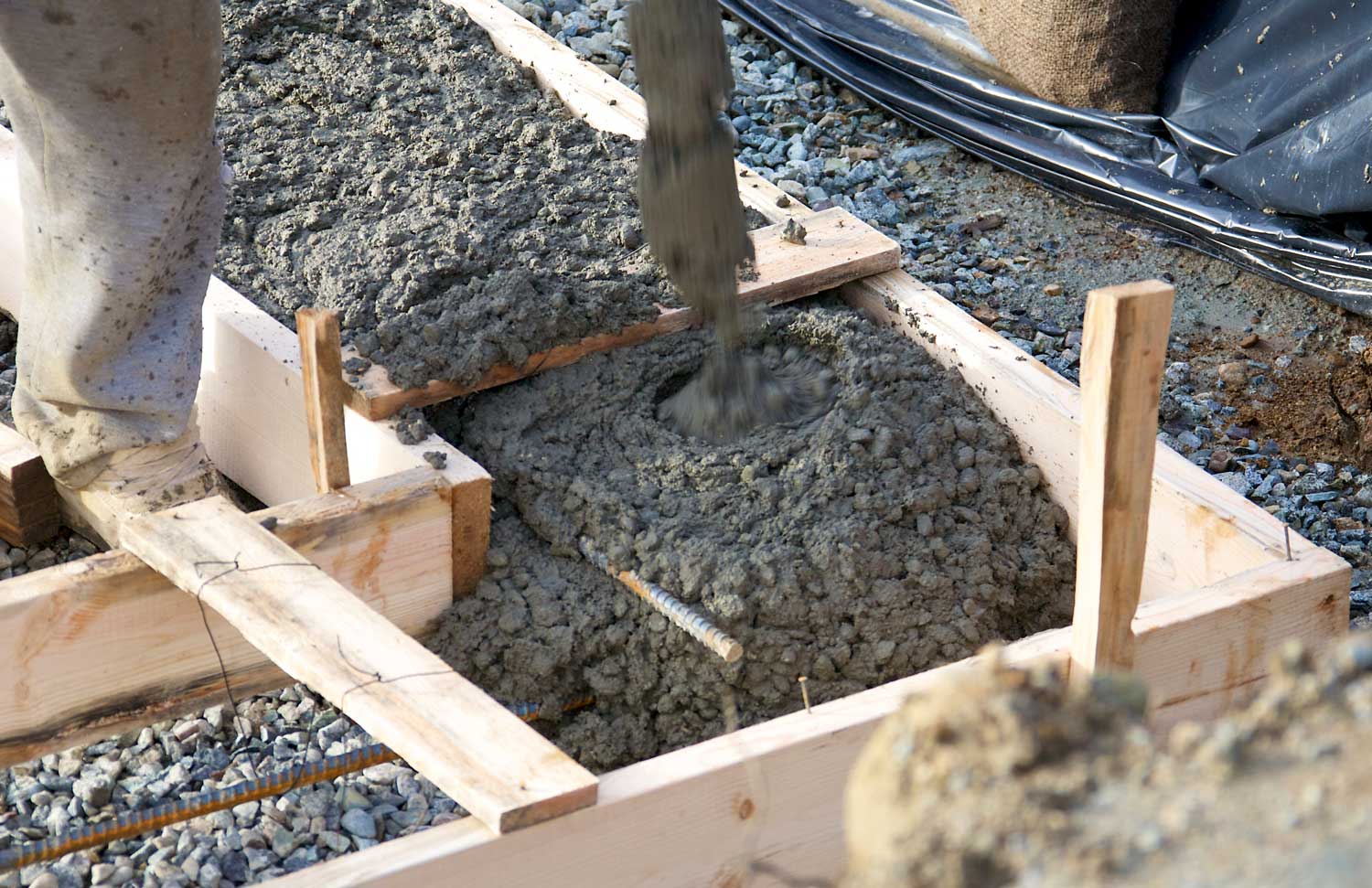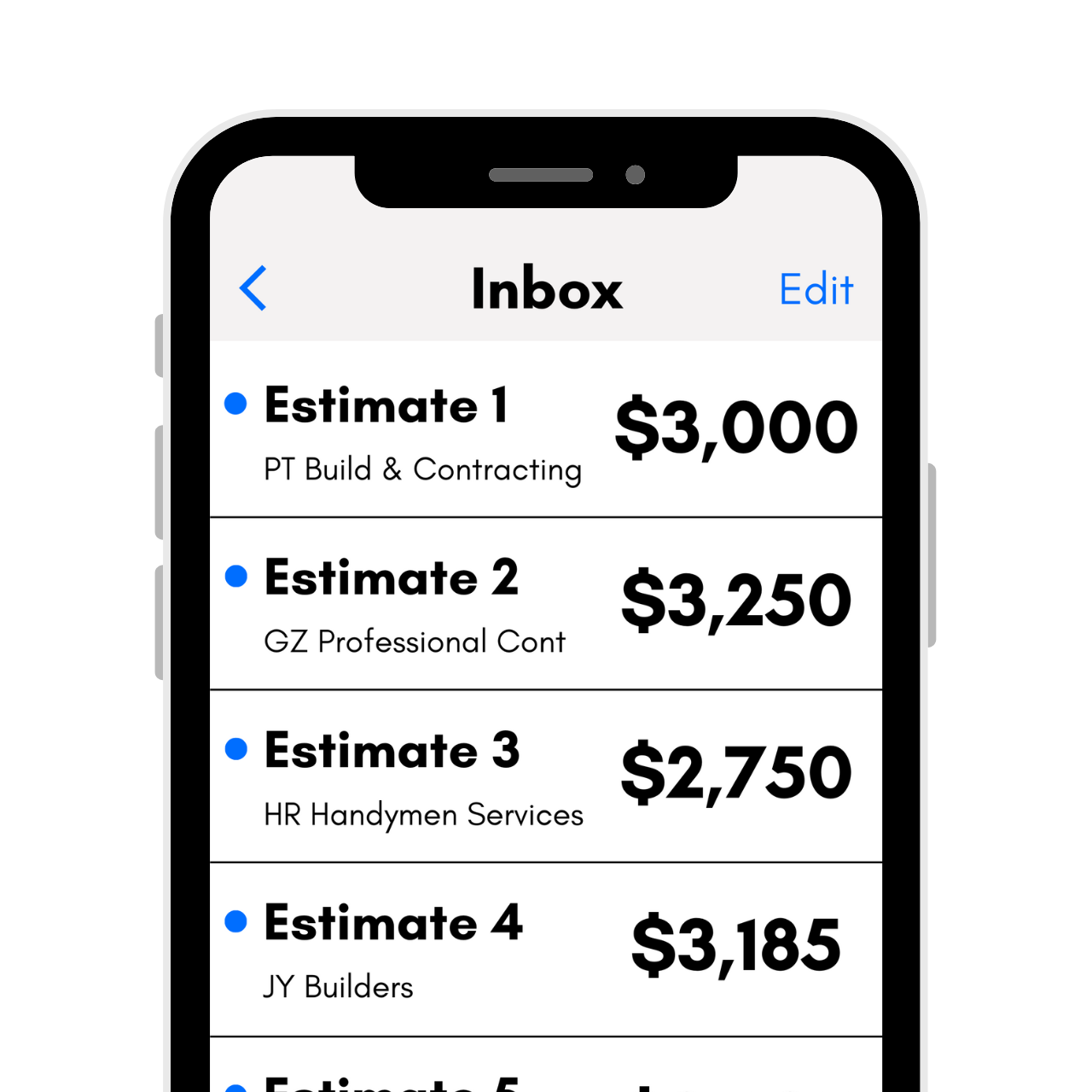Cost to Install Footings – 2025 Price Guide
Concrete footings form the base of your foundation. Footings are made of concrete that has been reinforced with rebar and are generally installed in a trench. They provide support for the foundation and help prevent settling.
The cost to install footings varies, but is mostly determined by their size. Read on to learn more about how the price for footings is determined.
2025 Concrete Footings Costs
Calculate local project costs by entering your zip code.
Custom Location
| Typical Price Range (per linear foot) | $7 - $9 |
| Typical Price Range (per linear foot) | $5 - $19 |
Get free estimates from contractors near you.
On this page:
How Much Do Concrete Footings Cost?
It’s common knowledge that a solid foundation is an essential component of a home’s structural integrity. Concrete footings act as the support mechanism that help to bear the weight of your home.

If you think of a bed frame with wooden supports going across, this is a similar image to what you see when footings are placed before a foundation is poured.
They act like braces or sleepers on a railway track. Without them, your foundation could not support the house efficiently, and over time, the foundation would crack due to settling.
It’s clear that concrete footings are essential, and if you’re planning a new home project, you might be wondering how much they cost to install.
On average, footings cost $1.50 to $24 per linear foot. Most, however, tend to average around $7 to $9 per linear foot. For 100 linear feet, this averages $700 to $900.
The price varies based on the size of the footings and the amount of excavation needed. Here are some factors to consider when pricing concrete footings.
Types of Footings
There are primarily two types of footings that can be installed, continuous or pad footings.[1]
Continuous footings extend the entire length of the foundation and protrude beyond the sides to form a wider base and distribute the load of a wall to the soil below.
Pad footings are installed beneath a concentrated load, such as a pier or column, rather than the entire wall. These are intended to support the load of a smaller area rather than along a distributed surface.
Type of Soil
Before putting down any footings or starting your house foundation, you should have the soil tested to ensure you are using the right strength and amount of materials. Different types of soils have different capabilities when it comes to how much weight they can hold before sinking.
Soil is generally more stable the more rock it contains, and will impact the size of the footings needed. The most resilient type of soil is crystalline bedrock, which can withstand 12,000 pounds per square inch (psi), while the least resilient is clay which can only withstand 2,000 psi.[2]
Doing a soil test before beginning work will help you figure out how to compensate for any weaknesses in the soil’s weight-bearing capacity. A weaker soil needs wider footings, which means more expensive footings.
Sometimes, you may need a structural engineer to weigh in, particularly if you have weak soil and are planning a heavier build.
Type of House
The type of house or property you’re building will impact the type, width, and amount of footings used. A two or three-story home will exert much more pressure on the soil trying to withstand the weight than a single-story home, for example.
The layout of the home will also determine the number and size of footings required.
Labor Costs
Hiring a skilled team with experience in planning and pouring footings is essential to a successful project. A misplaced footing will make your foundation shift and potentially crack.
A cracked foundation is a serious problem! Hiring experienced professionals who specialize in footings and foundation work will reduce the chances of foundation issues later.
Labor costs to pour a footing can range from $0.50 to $8 per linear foot, depending on the type of footing, soil, and load.
Building Codes
Building codes are different all over the country and are stricter in some areas than in others. In some areas, the code requires more substantial footings than in others, which will determine how much they cost.
Climate
The very climate you live in determines the difficulty and expense of the concrete footing project, as concrete deteriorates more quickly in hotter climates.
Thus, if you live in a state that reaches high temperatures, you may find that the concrete you purchase will be more expensive due to the necessity of preservatives or treatments included in the material.
In colder climates, footings may need to be deeper to get below the frost line to prevent upheaval and shifting due to freeze-thaw cycles.
Cost Per Square Foot
Footings cost, on average, between $3 and $7 per square foot of the home. This sounds inexpensive, but it all adds up, particularly for larger homes.
Linear Foot Pricing
The size and linear foot dictate the price of concrete footings. When you want to know precisely how many concrete footings you need or how much they will cost without reference to the size of the property, the answer is often provided in linear feet. Linear feet are another way of expressing a length in feet, learn more about that in our guide to calculating linear footage.
So, How Much Do They Actually Cost?
The actual cost of concrete footings ranges from $1.50 to $116.70 per linear foot. This is quite a marked difference! The cost fluctuates greatly by how wide and deep the footings need to go, as you can see from the four examples here:
- 12″ W x 6″ D = $4.74 per linear foot
- 16″ W x 8″ D = $8.78 per linear foot
- 18″ W x 8″ D = $9.28 per linear foot
- 24″ W x 12″ D = $19.43 per linear foot
Once you know the type and weight-bearing capacity of the soil you intend to build on, consult with your contractor to find the width and depth of concrete footing you need to meet building code requirements in your area.
Estimating Concrete
Concrete is sold by the cubic yard and costs approximately $137 per cubic yard for a 2,000 psi rated mix.[3] Use a concrete calculator to find out exactly how much concrete you need for your project as long as you know the dimensions of the area you need to pour.
Looking for a contractor?
Get several free estimates from concrete professionals in your area to find out how much your project will cost.
Frequently Asked Questions
Does the type of footing affect the cost?
Continuous footings are more costly than pad footings to install. Likewise, the wider and larger the footing, the higher the cost.
Are concrete footings necessary?
Yes, footings are necessary to help support the weight of a foundation and the walls and structure above. Without footings, the foundation may crack over time.
Can you pour your own footings?
This may depend on the area; in some cases, yes, while in others, it is against building code. To know for certain, you’ll need to contact your local municipality for more information.
All pricing information on this page is based on average industry costs, and is subject to variance for project-specific materials, labor rates, and requirements.
References
- American Concrete Institute, Guide to Residential Concrete Construction, https://www.concrete.org/committees/getagendaminutes.aspx?DocID=58127
- Lee Wallender, Foundation Footings: Code Basics, The Spruce, https://www.thespruce.com/foundation-footings-code-basics-1822269
- Concrete Network, Concrete Price Considerations - Cost of Concrete, https://www.concretenetwork.com/concrete-prices.html



